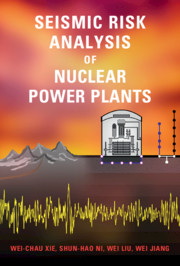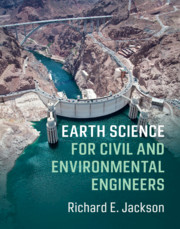Refine search
Actions for selected content:
2643 results in Civil and geotechnical engineering
Bibliography
-
- Book:
- Seismic Risk Analysis of Nuclear Power Plants
- Published online:
- 29 March 2019
- Print publication:
- 18 April 2019, pp 595-608
-
- Chapter
- Export citation
2 - Engineering Seismology
-
- Book:
- Seismic Risk Analysis of Nuclear Power Plants
- Published online:
- 29 March 2019
- Print publication:
- 18 April 2019, pp 17-56
-
- Chapter
- Export citation
9 - Seismic Fragility Analysis
-
- Book:
- Seismic Risk Analysis of Nuclear Power Plants
- Published online:
- 29 March 2019
- Print publication:
- 18 April 2019, pp 410-516
-
- Chapter
- Export citation
Contents
-
- Book:
- Seismic Risk Analysis of Nuclear Power Plants
- Published online:
- 29 March 2019
- Print publication:
- 18 April 2019, pp v-viii
-
- Chapter
- Export citation
6 - Ground Motions for Seismic Analysis
-
- Book:
- Seismic Risk Analysis of Nuclear Power Plants
- Published online:
- 29 March 2019
- Print publication:
- 18 April 2019, pp 230-282
-
- Chapter
- Export citation
Appendix B - Digital Signal Processing
-
- Book:
- Seismic Risk Analysis of Nuclear Power Plants
- Published online:
- 29 March 2019
- Print publication:
- 18 April 2019, pp 568-594
-
- Chapter
- Export citation
Preface
-
- Book:
- Seismic Risk Analysis of Nuclear Power Plants
- Published online:
- 29 March 2019
- Print publication:
- 18 April 2019, pp ix-xiii
-
- Chapter
- Export citation
Frontmatter
-
- Book:
- Seismic Risk Analysis of Nuclear Power Plants
- Published online:
- 29 March 2019
- Print publication:
- 18 April 2019, pp i-iv
-
- Chapter
- Export citation
10 - Seismic Probabilistic Safety Assessment
-
- Book:
- Seismic Risk Analysis of Nuclear Power Plants
- Published online:
- 29 March 2019
- Print publication:
- 18 April 2019, pp 517-561
-
- Chapter
- Export citation
1 - Introduction
-
- Book:
- Seismic Risk Analysis of Nuclear Power Plants
- Published online:
- 29 March 2019
- Print publication:
- 18 April 2019, pp 1-16
-
- Chapter
- Export citation
8 - Floor Response Spectra
-
- Book:
- Seismic Risk Analysis of Nuclear Power Plants
- Published online:
- 29 March 2019
- Print publication:
- 18 April 2019, pp 328-409
-
- Chapter
- Export citation
4 - Seismic Response Spectra
-
- Book:
- Seismic Risk Analysis of Nuclear Power Plants
- Published online:
- 29 March 2019
- Print publication:
- 18 April 2019, pp 115-152
-
- Chapter
- Export citation
5 - Seismic Hazard Analysis
-
- Book:
- Seismic Risk Analysis of Nuclear Power Plants
- Published online:
- 29 March 2019
- Print publication:
- 18 April 2019, pp 153-229
-
- Chapter
- Export citation
3 - Basics of Random Processes and Structural Dynamics
-
- Book:
- Seismic Risk Analysis of Nuclear Power Plants
- Published online:
- 29 March 2019
- Print publication:
- 18 April 2019, pp 57-114
-
- Chapter
- Export citation

Seismic Risk Analysis of Nuclear Power Plants
-
- Published online:
- 29 March 2019
- Print publication:
- 18 April 2019

Earth Science for Civil and Environmental Engineers
-
- Published online:
- 20 March 2019
- Print publication:
- 24 January 2019
-
- Textbook
- Export citation
Contents
-
- Book:
- Earth Science for Civil and Environmental Engineers
- Published online:
- 20 March 2019
- Print publication:
- 24 January 2019, pp v-x
-
- Chapter
- Export citation
Preface
-
- Book:
- Earth Science for Civil and Environmental Engineers
- Published online:
- 20 March 2019
- Print publication:
- 24 January 2019, pp xi-xiv
-
- Chapter
- Export citation
6 - Terrain Evolution and Analysis
- from Part II - Soils and Sediments
-
- Book:
- Earth Science for Civil and Environmental Engineers
- Published online:
- 20 March 2019
- Print publication:
- 24 January 2019, pp 123-149
-
- Chapter
- Export citation
9 - Fluvial Processes and Sediments
- from Part II - Soils and Sediments
-
- Book:
- Earth Science for Civil and Environmental Engineers
- Published online:
- 20 March 2019
- Print publication:
- 24 January 2019, pp 196-218
-
- Chapter
- Export citation
